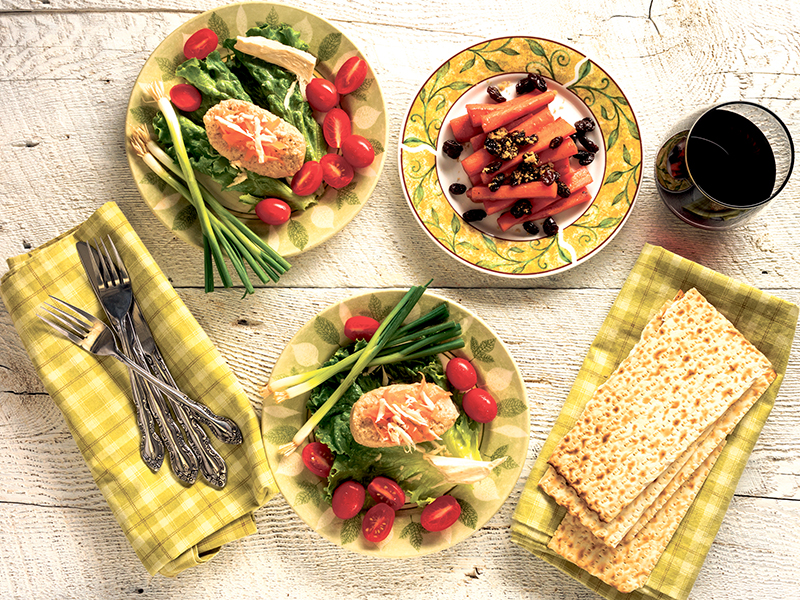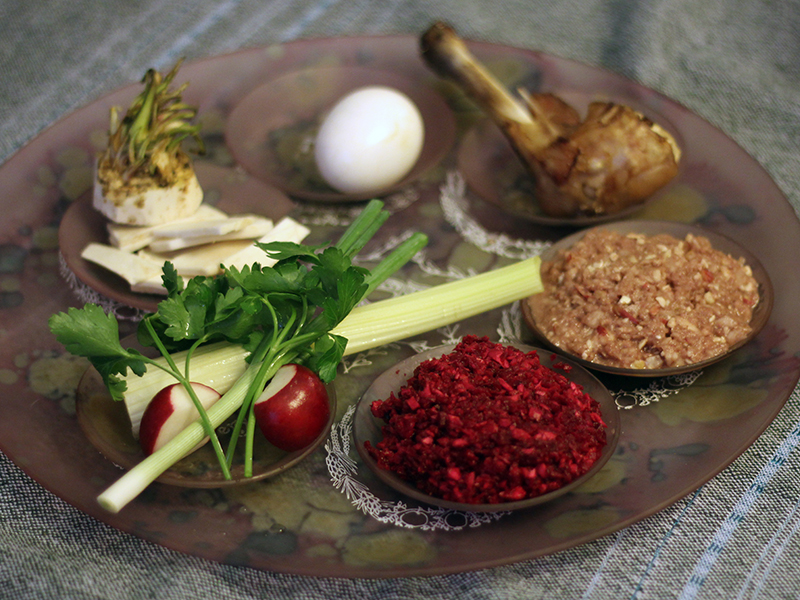What food is an essential component of the traditional wedding dinner in southern Germany, where it is served with beef?
Need more clues? It is also used in a salad that’s served with lamb dishes at Easter in parts of Romania. In Serbia, it is an essential condiment that’s served with meat dishes. In Slovenia, it’s grated and mixed with sour cream and hard-boiled eggs or apples, as part of a traditional Easter dish. In southern Italy, it’s part of a main course that includes eggs, cheese and sausage.
It is probably indigenous to eastern Europe, but has been cultivated since antiquity and was known in Egypt as far back as 1500 BCE.
If I give you the final hint, you will know immediately. According to the haggadah, we are to eat it to symbolize the bitterness of slavery in Egypt.
Maror is one of the foods on the seder plate that we bless and dip into haroset to symbolize the mortar that the Israelites used to bind the bricks. After shaking off the haroset, we eat the minimum amount of maror, about the volume of an olive.
Yes, horseradish. In the 1590s, the English coined the term, which is a combination of “horse,” meaning coarse or strong, and “radish.”
READ: GEFILTE FISH – OLD AND NEW TRADITIONS
According to John Cooper in Eat and Be Satisfied: A Social History of Jewish Food, “the Mishnah enumerated five vegetables that could be utilized as the bitter herb for the seder service, all of which should have leaves. The five are: hazeret, ilshin, tamcha, charchavina and maror.”
Hazeret refers to lettuce; ilshin is either endive, or chicory, or both; tamcha is a leafy, dull green herb, also known as horehoud, which has none of the talmudic characteristics and is used in cough medicine and liqueur; charchavina refers to either field eryngo or sea eryngo. Maror may refer to wormwood or thistle. Sephardim interpret hazeret as Romaine lettuce.
Rabbi Alexander Suslin of Frankfurt, who died in 1394, was the first authority to permit the use of horseradish, in places where lettuce was not available, even though it is a fleshy root that doesn’t strictly conform with the halakhic requirement of eating leaves. The Talmud also says that, besides being leafy, maror should have latex sap and dull green foliage, neither of which applies to horseradish. The medieval German rabbinic authorities appear to have identified horseradish incorrectly, confusing the German word “Meerrettich” with “merirta,” the Aramaic word for maror.
Prior to this, according to Gil Marks in the Encyclopedia of Jewish Food, Eliezer ben Nathan of Mainz (1090-1170) mentions using chrain to make haroset. In Sefer ha-Rokeach (1200), Rabbi Eleazar ben Judah of Worms included it in his haroset recipe.
Germans used whole pieces of horseradish to make maror, while eastern Europeans grated it.
It was not until Rabbi Yom Tov Lipman Ben Nathan Heller of Moravia (1579-1654), in his commentary on the Mishnah, considered horseradish to be the tamcha mentioned in the Talmud, that it really caught on.

In central and eastern Europe, it is called khren. Red horseradish is mixed with red beet root, while white khren contains no beet.
In Hebrew, it is called hazeret, which is on the talmudic list of accepted types of maror.
Horseradish is actually a root vegetable that’s in the same family as mustard, wasabi, broccoli and cabbage.
It can reach heights of around 1.5 metres and is cultivated for its root, which has hardly any aroma. When the root is cut or grated, the cells break down and produce an oil that irritates the nose and eyes.
In the late 1800s, German immigrants to the United States began growing it in Collinsville, Ill. The self-proclaimed horseradish capital of the world has been hosting the Horseradish Festival since 1988 and grows most of the world’s supply. Six million gallons are produced there annually.
The first American Jewish cookbook, Jewish Cookery (1871), included a recipe for “Horseradish Stew.” When the Settlement Cookbook was published in 1901, “Horseradish Sauce” and “Beer and Horseradish Relish” were included, as well.
Horseradish is actually a root vegetable that’s in the same family as mustard.
H.J. Heinz began processing and bottling horseradish in 1869. In 1932, Hyman Gold and his wife started processing and bottling horseradish in their Brooklyn apartment. Today, Gold’s and other private labels produce 90,000 bottles of the classic plain and grated beet horseradish without sugar every day.
My husband likes to tell the story of coming home from school one day before Passover when he was eight and going into the kitchen where his grandmother was grating the horseradish (she would make it almost every week). He jumped up on a chair, took one big whiff and fell over backwards. Thank goodness his father was there to catch him.
Think about some of this history when you take a piece of horseradish for the blessing over the maror, or place some on your gefilte fish, this Passover.
Sybil Kaplan is a journalist, lecturer, book reviewer and food writer who lives in Jerusalem. She created and leads the weekly English-language Shuk Walks in Machaneh Yehudah, has compiled and edited nine kosher cookbooks and is the author of Witness to History: Ten Years as a Woman Journalist in Israel.










